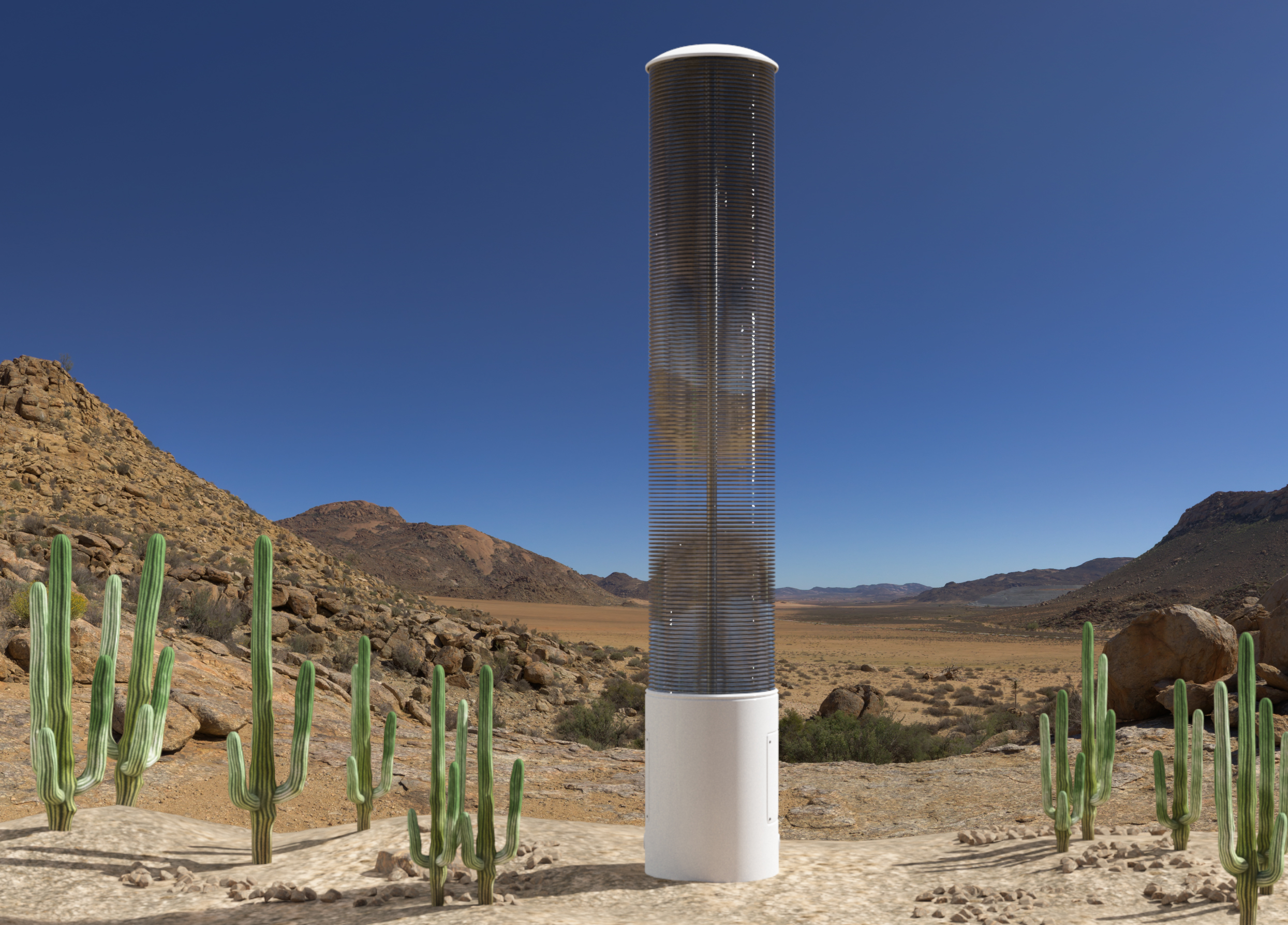Researchers pinpoint how sorbent materials catch and release carbon

Klaus Lackner in his lab. New research by Lackner and his colleagues explains how sorbent materials catch and release carbon, a key component to direct air capture systems that remove carbon from the atmosphere. Photo courtesy Ira A. Fulton Schools of Engineering
A key component of ambient direct air capture (DAC) systems that remove carbon dioxide from the air is the sorbent material that is used to first capture the carbon and then to release it. Certain sorbent materials can pull carbon dioxide from the air as it flows over the material. It then releases the carbon when water is applied. As the material dries again, it absorbs carbon, and so on.
This elegant function of specific materials has been observed for several years by those working on DAC systems, like Klaus Lackner, an Arizona State University professor in the School of Sustainable Engineering and the Built Environment. Lackner has developed a system called “MechanicalTree” that uses sorbent materials to remove carbon from air.
Now, in a new paper in the early, online edition of Joule, Lackner and his colleagues lay out exactly how some of these sorbent materials capture and release carbon, a finding that could lead to the smarter design of sorbent materials at the heart of all carbon removal systems.
“We developed a better understanding of the moisture swing mechanism of these sorbents by demonstrating it in various materials and by developing computational tools and models that explain the concept,” Lackner said. “We now understand the effect that drives the moisture swing, and this insight increases the range of materials that can do that.”
The paper describes in detail and on a microscopic scale what is happening with the sorbent material. When it is dry, it binds to carbon in the air, and when it is wet, it desorbs the carbon. The system was examined with quantum mechanics simulations and verified in experiments.
“This concept is not surprising to me because I’ve been playing with this stuff for a decade, but the moisture swing concept is still very novel and very different from other ways of loading and unloading a sorbent,” Lackner explained. “We discovered this phenomenon 14 years ago, and for a long time it was a mystery on how it worked. Now it seems pretty obvious.”
Overall, Lackner added, “this advance opens the door for more candidate materials and rational design. Many of those materials are far cheaper than what is often used as sorbents.”
Artist concept of the “MechanicalTree,” a device developed by Klaus Lackner and commercialized by Silicon Kingdom Holdings, Dublin, that can remove carbon from the air. Photo by Silicon Kingdom Holdings
Lackner, a pioneer in the field of negative carbon emissions, has developed a device, called the “MechanicalTree” that acts like a tree but is thousands of times more efficient at removing CO2 from ambient air. The MechanicalTree, which is being commercialized by Silicon Kingdom Holdings of Dublin, Ireland, allows the captured gas to be sequestered or sold for reuse in a variety of applications, such as synthetic fuels, enhanced oil recovery or in food, beverage and agriculture industries.
Sorbent materials to capture the carbon are at the heart of Lackner’s device.
Unlike other carbon capture technologies, SKH’s technology can remove CO2 from the atmosphere without the need to draw air through the system mechanically using energy intensive devices. Instead, the technology uses the wind to blow air through the system. This makes it a passive, relatively low-cost and scalable solution that is commercially viable. If deployed at scale, the technology could lead to significant reductions in the levels of CO2 in Earth’s atmosphere, helping to combat global warming.
Carbon dioxide is an odorless, colorless gas that is a byproduct of burning fossil fuels and other natural processes. Humans release more than 36 billion metric tons of CO2 into the atmosphere annually, significantly changing Earth’s natural carbon cycle. The excess carbon traps heat and causes global warming.
The MechanicalTree is a novel geometry which is agnostic to wind direction and can work with the right sorbent for each location. Each Tree contains a stack of sorbent-filled disks. When the tree-like column is fully extended and the disks spread apart, air flow makes contact with the disk surfaces and the CO2 gets bound up. For regeneration, the disks are lowered inside the bottom container. Inside this chamber, the CO2 is released from the sorbent. The released gas is then collected, purified, processed and put to other uses, while the disks are redeployed to capture more CO2.
More Science and technology

Turning up the light: Plants, semiconductors and fuel production
What can plants and semiconductors teach us about fuel production?ASU's Gary Moore hopes to find out.With the aim of learning how…

ASU technical innovation enables more reliable and less expensive electricity
Growing demand for electricity is pushing the energy sector to innovate faster and deploy more resources to keep the lights on…

What do a spacecraft, a skeleton and an asteroid have in common? This ASU professor
NASA’s Lucy spacecraft will probe an asteroid as it flys by it on Sunday — one with a connection to the mission name.The asteroid…


